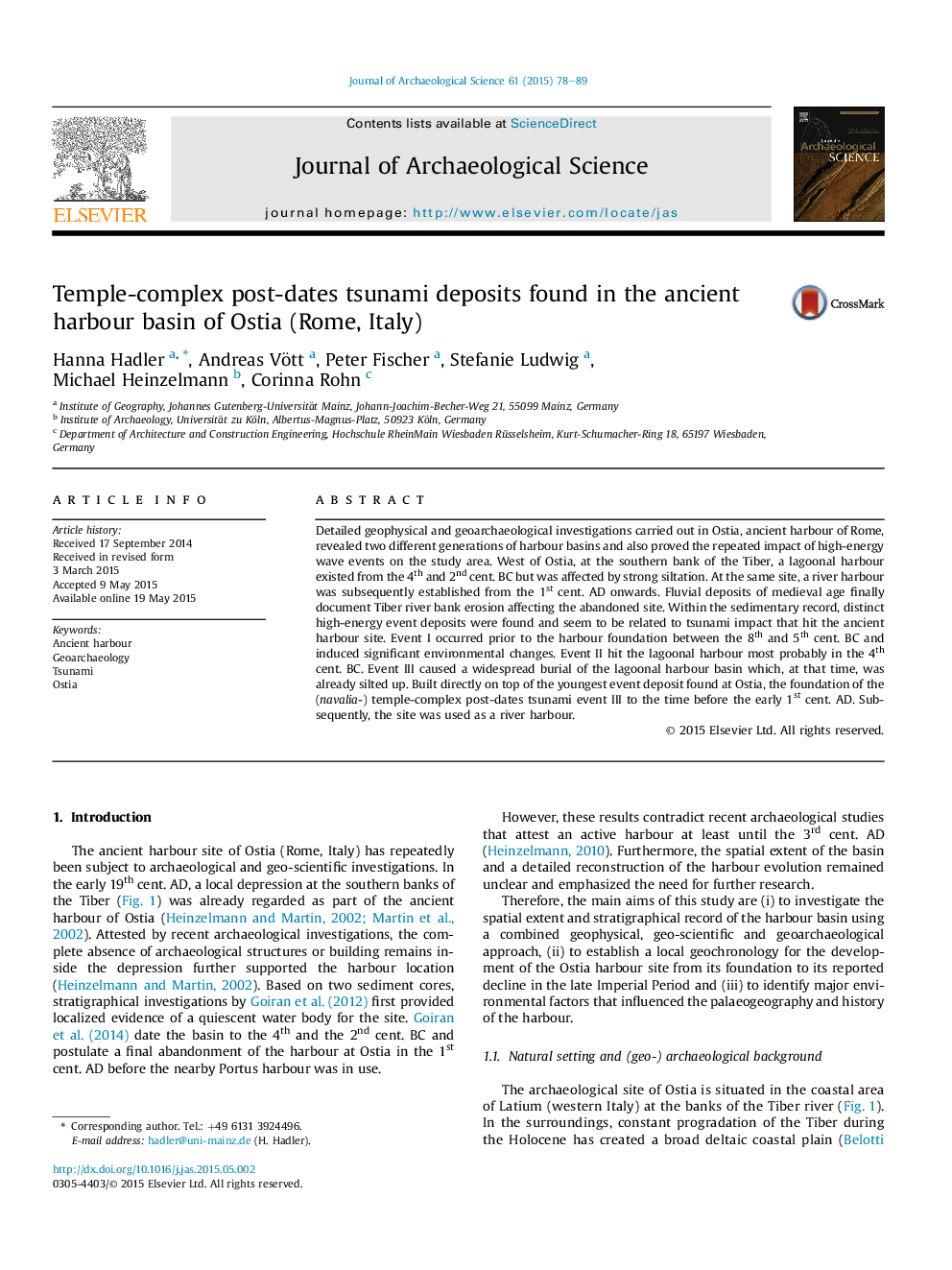| Article ID | Journal | Published Year | Pages | File Type |
|---|---|---|---|---|
| 7441766 | Journal of Archaeological Science | 2015 | 12 Pages |
Abstract
Detailed geophysical and geoarchaeological investigations carried out in Ostia, ancient harbour of Rome, revealed two different generations of harbour basins and also proved the repeated impact of high-energy wave events on the study area. West of Ostia, at the southern bank of the Tiber, a lagoonal harbour existed from the 4th and 2nd cent. BC but was affected by strong siltation. At the same site, a river harbour was subsequently established from the 1st cent. AD onwards. Fluvial deposits of medieval age finally document Tiber river bank erosion affecting the abandoned site. Within the sedimentary record, distinct high-energy event deposits were found and seem to be related to tsunami impact that hit the ancient harbour site. Event I occurred prior to the harbour foundation between the 8th and 5th cent. BC and induced significant environmental changes. Event II hit the lagoonal harbour most probably in the 4th cent. BC. Event III caused a widespread burial of the lagoonal harbour basin which, at that time, was already silted up. Built directly on top of the youngest event deposit found at Ostia, the foundation of the (navalia-) temple-complex post-dates tsunami event III to the time before the early 1st cent. AD. Subsequently, the site was used as a river harbour.
Related Topics
Physical Sciences and Engineering
Materials Science
Materials Science (General)
Authors
Hanna Hadler, Andreas Vött, Peter Fischer, Stefanie Ludwig, Michael Heinzelmann, Corinna Rohn,
